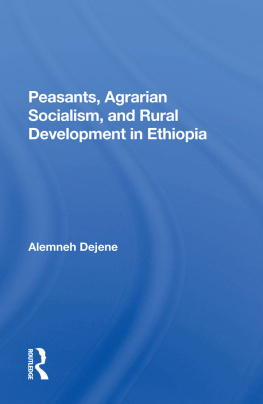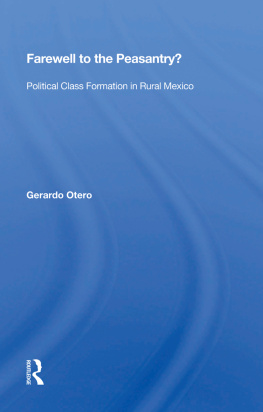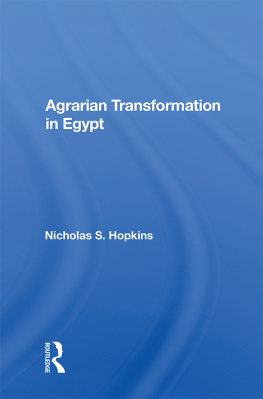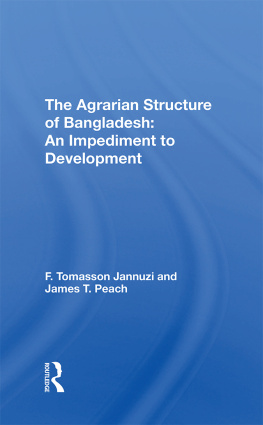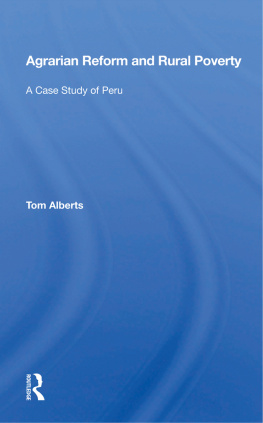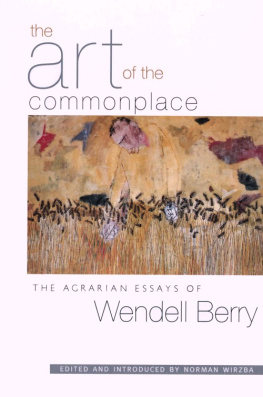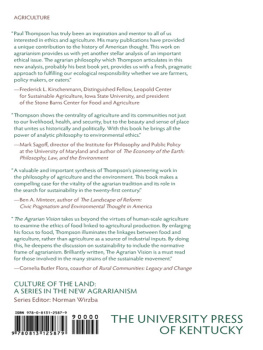First published 2000 by Transaction Publishers
Published 2017 by Routledge
2 Park Square, Milton Park, Abingdon, Oxon OX14 4RN
711 Third Avenue, New York, NY 10017, USA
Routledge is an imprint of the Taylor & Francis Group, an informa business
Copyright 2000 by Taylor & Francis.
All rights reserved. No part of this book may be reprinted or reproduced or utilised in any form or by any electronic, mechanical, or other means, now known or hereafter invented, including photocopying and recording, or in any information storage or retrieval system, without permission in writing from the publishers.
Notice:
Product or corporate names may be trademarks or registered trademarks, and are used only for identificaion and explanation without intent to infringe.
Library of Congress Catalog Number: 99-056518
Carlson, Allan, 1949-
The new agrarian mind : the movement toward decentralist thought in twentieth-century America / Allan Carlson.
p. cm.
Includes bibliographical references and index.
ISBN 0-7658-0590-1 (alk. paper)
1. United StatesIntellectual life20th century. 2. Country lifeUnited StatesPhilosophy. 3. Agrarians (Group of writers). 4. Sociology, RuralUnited States. I. Title.
E169.12.C276 1999
305.55209730904dc21
99-056518
ISBN 9780765805904 (pbk)
Acknowledgements
The staff of the University of Wisconsin-Madison library system, particularly at the Steenboch Agriculture Library, gave me considerable assistance, as did the archivists at Marquette University, home of the papers of Luigi Ligutti.
A special grant that gave me the time and resources to complete the needed research and to draft the manuscript came from The Earhart Foundation of Ann Arbor, Michigan.
As before, very special help came from my long time associate, Heidi Gee, who managed the word processing chores with skill and patience.
For helping me to understand better the modern agrarian problem, and for inspiring me to complete the project, I need to thank the good folk at Heritage Homesteads, on the Brazos de Dios River in Texas.
For reading the manuscript and saving me from errors of language and interpretation, I am grateful to Michael Jordan of Hillsdale College, James Schall of Georgetown University, and Bill Kauffman of Batavia, New York. For the errors that remain, of course, I alone am responsible.
Finally, I thank my wife, Elizabeth, and my childrenAnders, Sarah-Eva, Anna, and Miriamfor the gift of a canvas wall tent. Placed in a grove of trees on my wifes family farm in Owen Township, Winnebago County, Illinois, it served as the place where this manuscript took form in the delightful summer of 1998.
The year 1900 was the watershed in American farm and rural life.
The agrarianism woven into the very fabric of the new American republic was, in one sense, still strong. As Thomas Jefferson had made the argument in a 1785 letter to John Jay: Cultivators of the earth are the most valuable citizens. They are the most vigorous, the most independent, the most virtuous, and they are tied to their country and wedded to its liberty by the most lasting bonds. Similar early celebrations of the yeoman farmer came from the pens of Jean Hector St. John de Crevecoeur (Letters from an American Farmer) and John Taylor of Caroline (Arator), sentiments that echoed across the nineteenth century.
Despite federal investments in the National Road and the wide promotion of canals, it would still have been possible, circa 1840, to imagine decisions that could have preserved the yeoman subsistence farmer as the normative American. New transportation routes could have been denied on public lands. Or the use of the power of eminent domain might have been curtailed. Or joint-stock companies might have been denied. Or preference could have been given, in various ways, to local and regional, rather than national and international markets. But the monocrop South, using agrarian rhetoric, pushed for open international trade, the better to market its cotton, while new settlers in the Mississippi Valley demanded internal improvements for access to the markets of the East and Europe.
Meanwhile, the industrial process resting on the joint-stock corporation and an extensive division of labor grew to rival, then surpass the home economy. Before 1840, homespun cloth, homemade clothes, hand wrought furniture, domestically produced candles, and home educated children were the rule, in city and countryside. After that year, industrial processes pressed into a rapidly growing number of product lines and the modern salesmen emerged, radically changing American household life. A highly integrated home economy, involving the altruistic, non-monetary exchange of goods and services by family members, gave way to heightened individualism, consumerism and other signs of economic modernity. The factory system also spread into education, with the state taking the lead in shaping public schooling as a collective, industrialized enterprise run by professionals, leaving the family as an institution again in retreat.
Partisans still debate the question of whether the Civil War was primarily over the issue of slavery or a contest between an agrarian civilization in the South and a rival industrial civilization in the North. Whatever the interpretation one might choose, it is undeniable that after 1865, there would be no holding back on the rapid, heavily subsidized spread of the railroads, on the quick settlement of the Plains states and the West, and on the expansion of industry and commercial agriculture to every corner of the nation. Even so, it was unclear for a time how this might affect the rural-urban balance. The Homestead Act of 1862 opened to farming vast tracts of essentially free arable land, and drew millions of new European immigrants, particularly from Germany and Scandinavia, to the Middle and Far West. The unsettled corners of Iowa, Minnesota, Wisconsin, Nebraska, and Kansas filled up quickly, followed by a rush to claim land in the Dakotas, Montana, Colorado, and finally Oklahoma. Meanwhile, Mormon leaders guided the settlement of the intermountain basin.
In the 1890s, the American frontier was declared closed, and the last skirmishes with the decimated Indian tribes occurred. Still, the census of 1900 showed that the farm population of the United States had grown by 20 percent during the prior decade, reaching 29,875,000. There were nearly 6 million farms in 1900, over four times the number counted in the antebellum year of 1850. The vast watershed of the Mississippi Riverincluding the great farming regions drained by the Ohio, Tennessee, Missouri, and Arkansas Riverswas now fully peopled by yeoman farm families. At the heart of this informal agrarian empire was the state of Iowa, a new political powerhouse where corn and farmer were kings and from which would issue a string of U.S. secretaries of agriculture.


